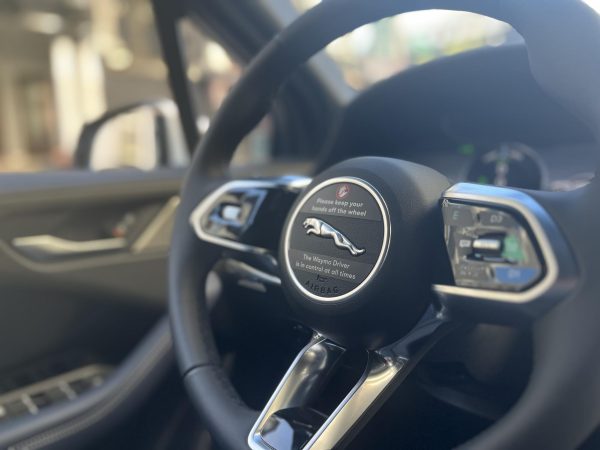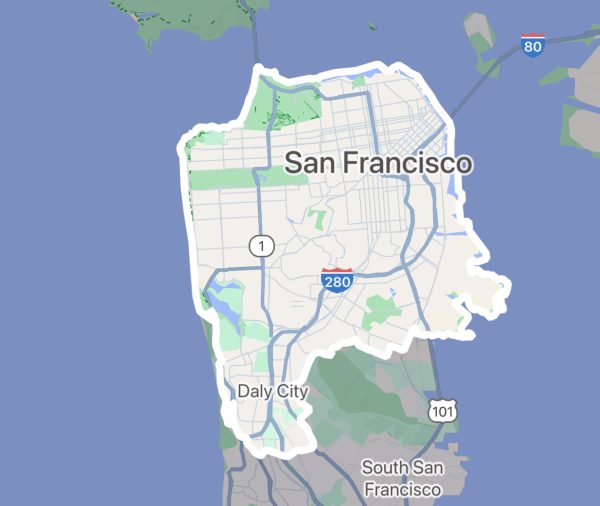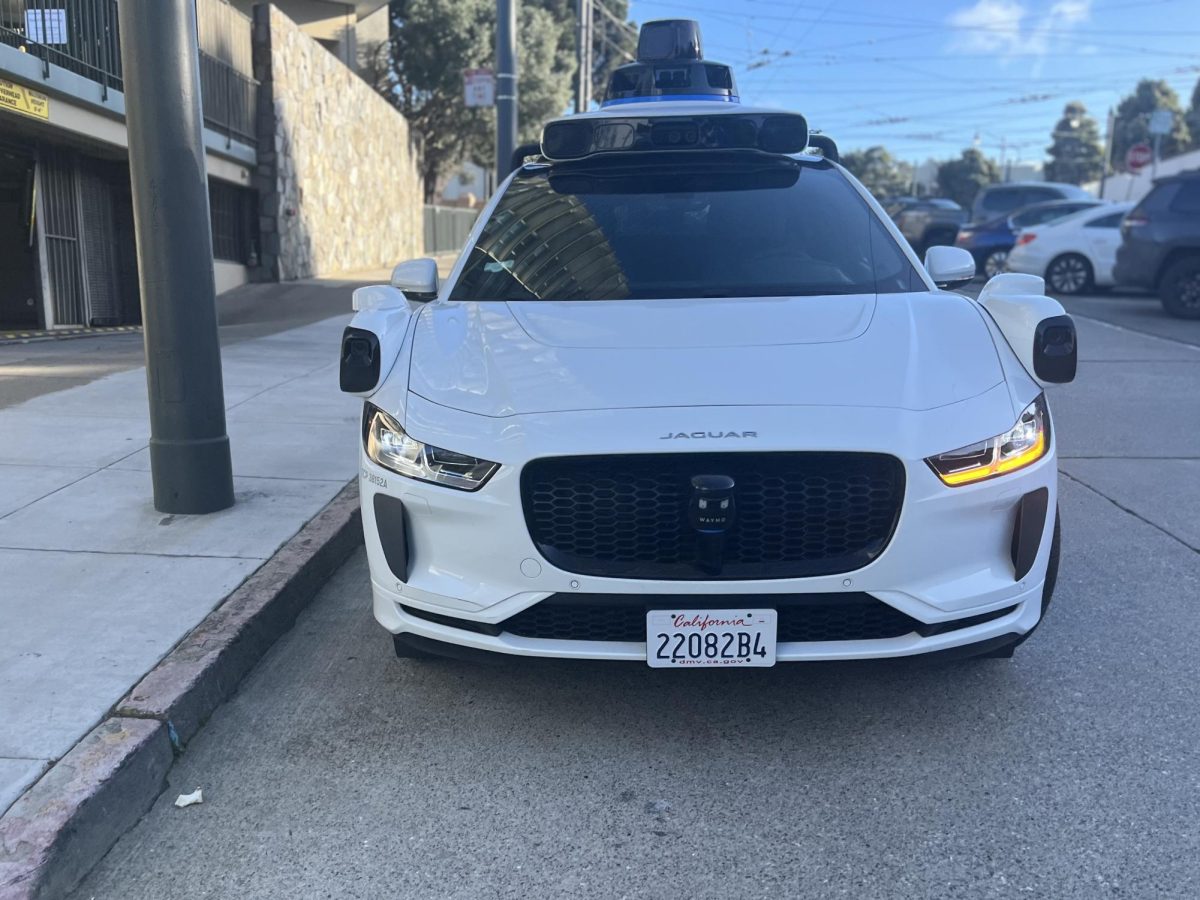Introduced to San Francisco in 2021, Waymos, the self-driving white Jaguars, have been a source of intrigue, fear, and excitement. This fascinating and futuristic mode of transportation has rapidly populated the city streets, sparking debates about its efficiency, comfort, price, and, notably, safety. The experience is exciting as a novel form of transportation, though driving is appropriately smooth, comfortable, and generally unremarkable.
In 2009, the Google Self-Driving Car Project began working on the Toyota Prius under cofounders Sebastian Thrun and Anthony Levandowski, and seven years later, Waymo became its own separate company under John Krafcik, the company’s CEO from 2015 to 2021. Waymo ran early programs for their autonomous cars in Phoenix, AZ, eventually bringing the business to San Francisco in 2021. In 2023, the company committed to an “all-electric fleet,” which, for San Francisco, meant an all-white Jaguar I-PACE collection of cars.
Waymo first took a tentative approach to introducing the program with a “Trusted Tester” program and having “drivers” ready to take control of the vehicle if needed, a practice that is now obsolete. In 2024, the Waymo app became available to those over 18, and the self-driving cars have only grown in prevalence since.
To order a Waymo, the user must download their app, similar to the process of ordering an Uber or Lyft. The app will ask you to confirm that you are 18 years of age or older, though it does not require identity verification, and with an account, you can hail a Waymo anywhere within their “Service Area,” which covers a large portion of San Francisco. Waymos cannot go outside of this range to drop off or pick up riders.
The Waymo app keeps riders informed about their ride, showing the car’s location, pickup point, and license plate for easy identification. The car unlocks from the rider’s phone, and upon entering, the car will welcome the rider with their name, a brief reminder to buckle up, and a short safety video that plays on the two screens in the front and backseat of the vehicle as it begins to drive.

(Ava Alsterlind)
Each Waymo has a maximum capacity of four people, as riders are not allowed to sit in the driver’s seat or touch the wheel, and minors may ride along when accompanied by an adult. Each car has trunk space available for passengers’ luggage.
Pricing varies depending on distance, timing, and demand, but typically reflects the costs of similar services like Uber and Lyft. For example, a 20-minute ride was 34 dollars, but the return trip of the same distance was only 17. You can change your destination en route, however, Waymo will update your price as well to confirm the change before charging you. Payments can be made through credit or debit cards or Apple or Google Pay. Along the same vein, you can request to pull the car over at any point during the ride, which will end your trip.
After the safety presentation, riders are free to use the screens for comfort controls, including playing music from Waymo’s playlists from iHeartRadio, which come with a pop mix, a Disney mix, a jazz mix, and several others. San Francisco’s Waymos are running a beta program, allowing riders to connect their own playlists to the car’s audio via Google Assistant, allowing for a familiar ambiance.
Passengers can easily adjust the temperature, call a Waymo support line, and see the trajectory of their trip with representative icons for cars and pedestrians around the car, a reassuring addition to the newfangled vehicle. For safety purposes, the Waymo has cameras and microphones inside the car, though the microphones remain turned off until riders call support.
The Waymo stayed at or below the speed limit and left a large distance between the car in front of it to keep passengers safe; however, it did run a few questionable yellow lights. The car frequently puts on its turn signal as if changing lanes, only to slightly shiftshift slightly around parked cars on the side of the road, a slightly confusing experience for the drivers around it. Though Waymos will find a safe place to park when dropping off and picking up passengers, the crowded nature of street parking in the city can make the dropoff process awkward and confusing and may let out riders while stopped in the street.

However, what makes the Waymo stand out is the autonomy that it gives to riders; they are the only people in the vehicle and have greater control over ensuring their safe arrival at their destination. In a ride-hailing service similar to Uber or Lyft, riders must trust a stranger with their safety, which can result in kidnapping or assault in rare cases.
Waymos pose their own safety issues as well, as their automated anti-collision mechanisms can leave people stuck in unsafe situations. However, a typical Waymo ride will not include such situations. So, while some may feel more comfortable in a car driven by a person who can make active decisions about the ride, others could prefer the independence of a self-driving car.
Since Waymo’s launch in San Francisco in August of 2021, they have extended throughout the city, and they will continue to do so as they gain prominence. Currently, new expansion plans are in development to bring Waymos to San Jose and the San Francisco International Airport.
Overall, Waymos are an accessible and generally safe way to get around, though they lack a wide range of mileage and the critical thinking skills a human driver offers. Waymo’s amenities and cleanliness boost the riding experience, and the lack of a driver not only feels futuristic but eliminates the awkwardness of a stranger in the vehicle with you. For its convenience and comfort, Waymo earns a four out of five feathers.
















